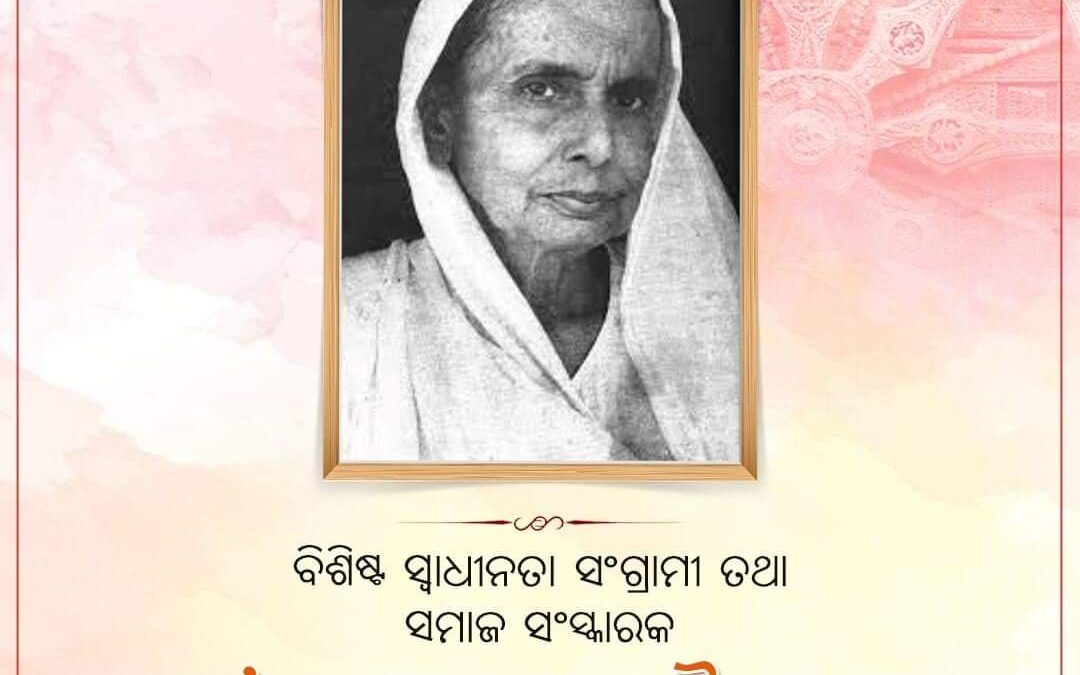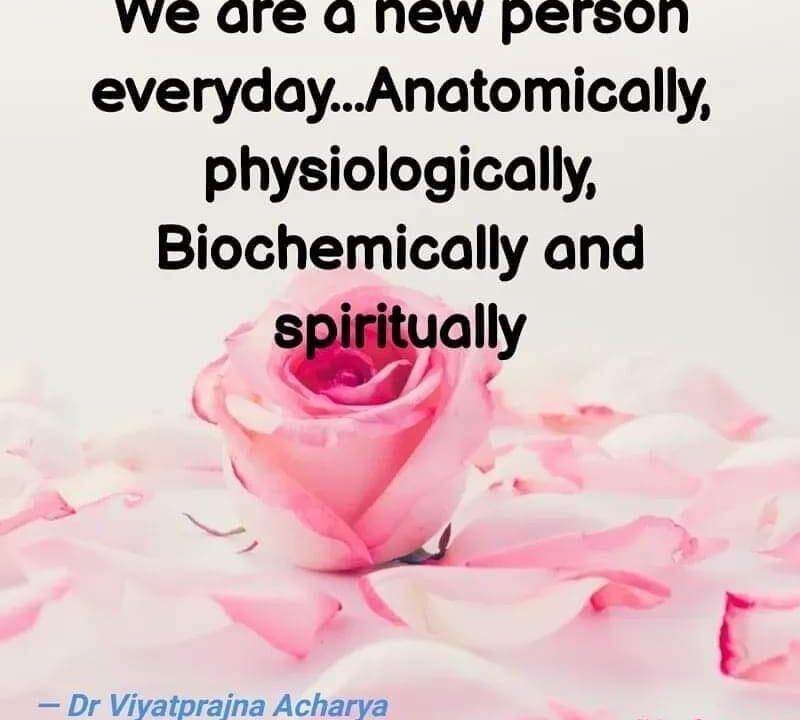- Have any Query?
- acharyaviyatprajna@gmail.com

COVID & RESEARCH
July 23, 2022
ସବୁଜ ବିନ୍ଦୁ
September 2, 2022Prof. (Dr) Viyatprajna Acharya
KIMS, KIIT (DU), Bhubaneswar
************
When concept of celebrating Women’s day was something utopian and terms like gender equality were never heard even, a lady with a pallu on her head and belonging to an orthodox family and married to a conservative and respectable family, had steered the independence movement in Odisha. She was addressed as only “Maa” across Odisha. Yes, she was the pioneer among women freedom fighters of Odisha- Smt. Ramadevi Chaudhury.
Not only she was a freedom fighter but also, she brought many social reforms and was also a frontline worker for “Bhoodaan movement” led by Sant Vinoba Bhabe.
Rama Devi was born to father Gopal Ballabh Das, a deputy magistrate and mother Basant Kumari Dei on 3rd December 1899. She was the niece of Utkal Gaurav Madhusudan Das. Maa Rama Devi married to a Deputy Collector Gopabandhu Choudhury at a tender age of only 15 years. With her sincere service, love and affection she won hearts of people. It was quite imaginable how well-protected her childhood as well as her bridehood might have been. Yet, with her sincere efforts she used to handle all household jobs efficiently under her mother’s guidance and was tutored at home by a home tutor. Soon she mastered 4 languages, Odia, English, Hindi and Bengali.After marriage she used to manage the household works adeptly yet found time for herself to go through different books, magazines and newspapers and updated herself with the news of the country. That was the era of tumultuous political situation of India, when the concept of “Swarajya” was budding in different corners of the country.
Though married at an early age, with less schooling exposure, surrounded with highly intellectual parents, in-laws, husband and uncle Utkal Gaurav Madhusudan Das could ignite the hidden talent within her and she was later leading from the front in India’s struggle for freedom.
She was very much influenced by Mahatma Gandhiji’s ideals and with her father-in-law’s permission she could organise a large congregation at the banks of Kathajodi river. Mahatma Gandhiji’s address to the crowd influenced her so much that not only she herself joined the movement but later convinced her husband Gopabandhu Choudhury to join the freedom struggle after resigning from government service on 21st February, 1921. Both husband and wife sacrificed their family life and joined for the freedom movement and had extended wholehearted support to Gandhiji. However, she maintained a perfect balance between her freedom movement and the responsibilities of a daughter-in-law of a most conservative family. Certainly, it was not a bed of roses for her to consecrate a comfortable living for building the nation.
After joining Gandhiji’s movement, she too started inspiring women to weave Khadi and after she joined Congress, became a member in Khadi board. Freedom fighters like Kiran Bala Sen Malati Devi, Sarla Devi and Pranakrishna Padhihari were inspired by her work and joined hands with her.
In 1921, 1930, 1936 and 1942 she was jailed along with other women leaders for her roles in struggle for freedom. It is a lesser-known fact that the “Salt Satyagraha” movement had taken equal force in Odisha and had shook the foundation of British Government in the state. She took part in Salt Satyagraha in 1930 and initiated a drive for collection of funds at Inchudi Balasore.
She spearheaded this independence movement based on Gandhiji’s ideologies in every village and town and performed as the active revolutionary leader and her influence dominated for decades long. Her appeal to women folks for donating their jewelleries for the noble cause of liberating India which highly impressed and impacted upon with her selfless service. Gandhiji showered praises on her spectacular work of her appealing and motivating women folks in joining Salt Satyagraha which generated a great result. Gandhiji appreciated her leadership, non-violence initiatives and remarked the role of women in the movement. He remarked, “It’s more valuable and double the efforts than the male counterparts that energizes, activates and motivates the non-violence workers.”
She also fought against different social inequalities and brought many reforms though she belonged to a higher caste and a very well-to do family and this never went without resistance in the family.
After being released from Hazaribagh jail in 1931, she started cleansing operation of Harijan slums and sloganeered for untouchability. She also served injured people during Salt Satyagraha while she was Jailed in Bhagalpur jail. Her sacrificing and dedicated work and serving jail sentences were exemplary service to the nation and that inspired many women. She formed a samiti named “Harijan Seva Sangh” for uplifting poor and oppressed harijans. Her struggle was against untouchability, focusing on education, health village organisations and establishment of socialism with humanity.
In 1946, she was offered a ticket by Dr Rajendra Prasad to fight election to which she politely declined it by saying she would rather prefer to focus on her original goal. She had said in Odia that “mora dhana kutibaku chhadi chashu kutibaku ichha nahin” i.e. I don’t wish to thresh the husk instead of the paddy. She considered the grassroot level work more vital than acquiring power at the center. This shows her sacrificing nature and strong determination who refrained from lip service like many at those times who hankered after power.
In 1932, she took part in Hubli Karnataka session of this organisation. In 1933 she became a member of relief committee took a lot of developmental work in 1934 she travelled far and wide in Odisha along with stalwarts like Gandhiji, Sardar Patel, Rajendra Prasad, Azad and Nehru which was basically for freedom struggle and eradication of untouchability.
For development of khadi, she opened an Ashram (a hermitage) and named it as “Gandhiji Seva Ghar”. She was involved in “Quit India Movement” and her family members including her husband also jailed but her dream was for a “complete Swaraj” and enactment of new constitution.
After the death of Kasturba Gandhi, Kasturba memorial trust formed at National level and Ramadevi was nominated as Odisha representative in 1944. She then opened a branch in Odisha. She, along with her husband Gopabandhu Choudhary, brother-in-law Nabakrushna Choudhury, sister-in-law Malati Chaudhary played a very prominent role in the Sarvoday meeting held at Angul, Odisha.
In 1944, she joined “Bhoodaan Andolan” under the leadership of Acharya Vinoba Bhave. She was also known as a Pioneer Bhoodan leader in Odisha and in the nation where main objective was to provide land to landless poor to have a sustained livelihood.
She opened food centers for famine affected people of Koraput Gunupur, Bisham Cuttack and Ramanagudam. For this noble deed, she fetched lot of financial help from different corners of the nation as people trusted her a lot.
She also opened Balwadi school (A nursery school) in Ramchandrapur and she imparted training to teachers in Utkal khadi mandal. She established Rama Devi Adivasi development centers in Dumbiguda in 1950. She travelled widely about 4000 KM by walk to help the poor famine- stricken people with relief material with her husband and Malati Chaudhari.
She presided the meeting of Akhil Bhartiya Sarvodaya sammelan in Maharashtra session. She was popular for true and dedicated service to the people.
She served the war-wounded and injured Jawans in 1962 Indo-China war.
Maa Ramadevi founded Shishu vihar in Cuttack, primary schools for poor students and a cancer hospital in Cuttack too.
She had a prominent role in solving the Rourkela communal violence in 1964 as a member of peace committee.
With Dr Hare Krishna Mahatab and Nilamani Routray, she published a weekly magazine “Sarvodaya”. This showed her academic pursuit and leadership, a rarity those days among women.
She went to Kuanrpur, Pattamundai, Kujanga where Queen Bhagyavati joined her in her initiatives.
Maa was very well oriented to political milieu and had been very keenly watching every incidents and political developments in the Congress party despite her busy schedules. She was far-sighted and knew importance of women’s role in the movement and its implications in the family and could bring a great change in society and in the state.
She was progressive in her thoughts and the crusader of agricultural development and was thinking of irrigation of land through smooth water supply by construction of canals. In addition to that, her main objective was to remove illiteracy from the society which played a hindrance to real developments. She opened many educational institutions despite no donations or any assistance from any quarter. She was committed for a simple lifestyle and was away from any luxurious lifestyle and was living like a saint, was sincerely following the paths created by Gandhiji without any intent of publicity.
She tried to remove the superstitions from the minds of people which deterred the growth of the society.
She was conferred Kala Bibhusan award by Utkal University and Jamuna Lal Bajaj award in 1981 for her dedicated services to the people and the nation. She was further honoured by the Bharatiya Gruhini Samaj of Bombay. Her home was like a hermitage and it was functioning like an undenying service organisation for the people.
Her Son and daughter Annapurna Chaudhary followed the same footprints of their parents. They were deeply attached and inspired by them.
Maa Ramadevi had three letter formula that had been in practice in her life that is 3P, 3D and 3S.
3P=peace, perseverance and patience,
3D = dedication, discipline and devotion
3S= Service, Sacrifice and Social responsibility
She believed that life is based on such ideological benchmark which will help securing goals. She was a woman of an indistinguishable torch bearer for the youth and next generation. In the sweet memories of Maa Ramadevi, a college was found which is today updated as Ramadevi University and her Shishu vihar school in Cuttack was also named after her.
She will be remembered as a great woman pioneer in Indian freedom struggle that will continue to signify her as a woman of progress, respect and development in India’s independence history forever.
Odisha and Odias will always proudly rejoice her contribution for the freedom movement and tall woman of her times.
She left this mortal world in 22 July 1985 leaving behind a long saga of leadership, sacrifice and social service.
(Collection of literature in Odia- Ms. Himadri DrHimadri Tanaya Mishra)




